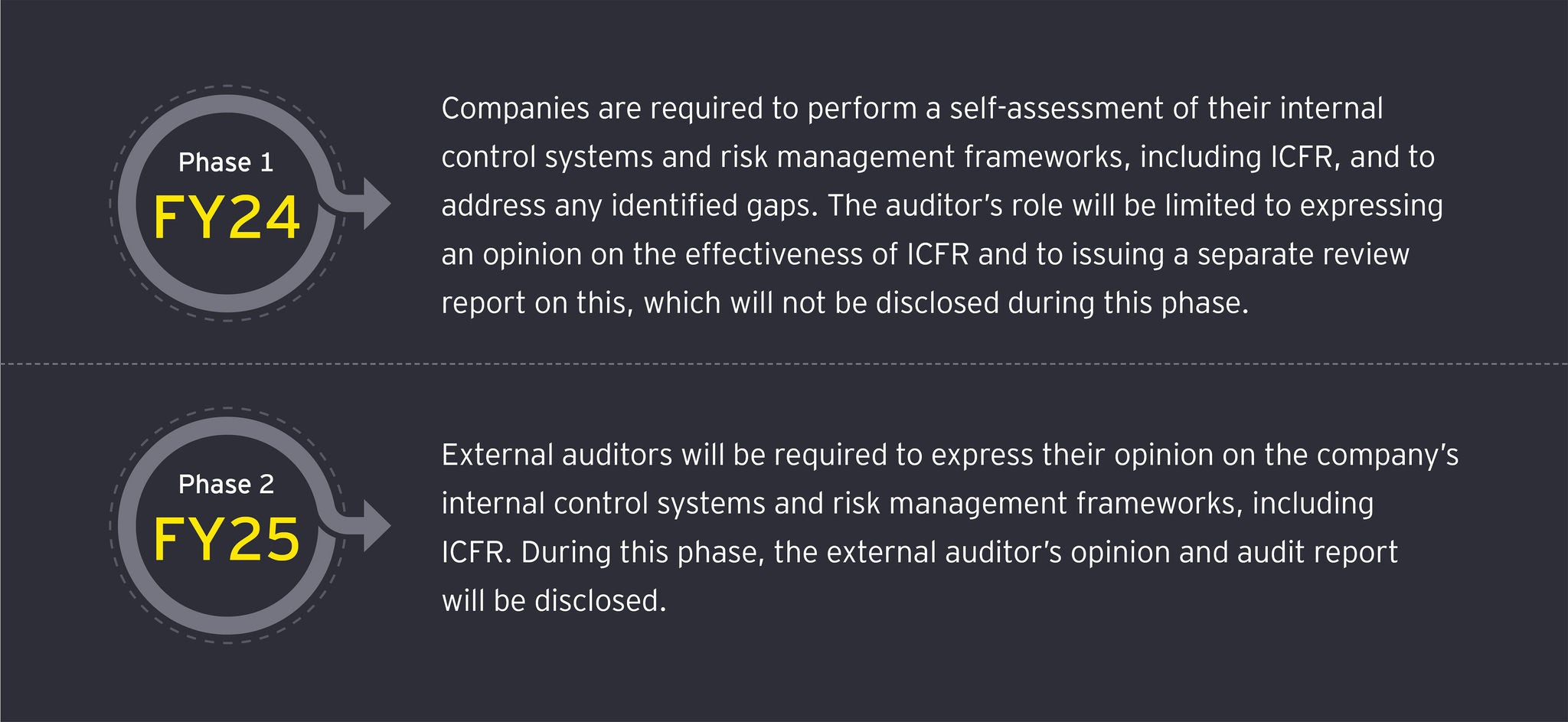EY refers to the global organization, and may refer to one or more, of the member firms of Ernst & Young Global Limited, each of which is a separate legal entity. Ernst & Young Global Limited, a UK company limited by guarantee, does not provide services to clients.
How EY can help
-
We can support you in building an effective and efficient finance function with a range of accounting, reporting and analytics services.
Read more -
Through enhanced corporate reporting, EY can support finance teams to meet demands for high-quality enhanced financial and nonfinancial information.
Read more
As companies begin implementing ICFR for the first time, it is essential to develop well-defined and agile strategies that not only address challenges but also view them as opportunities for growth. The EY MENA FAAS team has identified the following areas where companies may encounter challenges, along with tailored mitigation strategies derived from the capabilities of EY teams in ICFR implementation to achieve impactful and sustainable outcomes.
Key challenges in the first year of ICFR implementation
- Lack of clear and documented ICFR governance or ownership.
- Align timing of ICFR implementation to avoid peak periods and business disruption, allowing adequate remediation time.
- Establish a culture of acceptance among process owners of sophisticated processes toward ICFR rather than perceiving it as a compliance burden.
- Ineffective collaboration and alignment between the ICFR owner within the company and the external auditor.
- Ability to differentiate financial reporting controls from operational or compliance controls, and to distinguish between key and non-key controls.
By effectively integrating ICFR and robust risk management practices, organizations can fulfil regulatory obligations while protecting stakeholder investments and enhancing their market reputation. Compliance initiatives will lead to better financial health and provide a favorable ROI.







